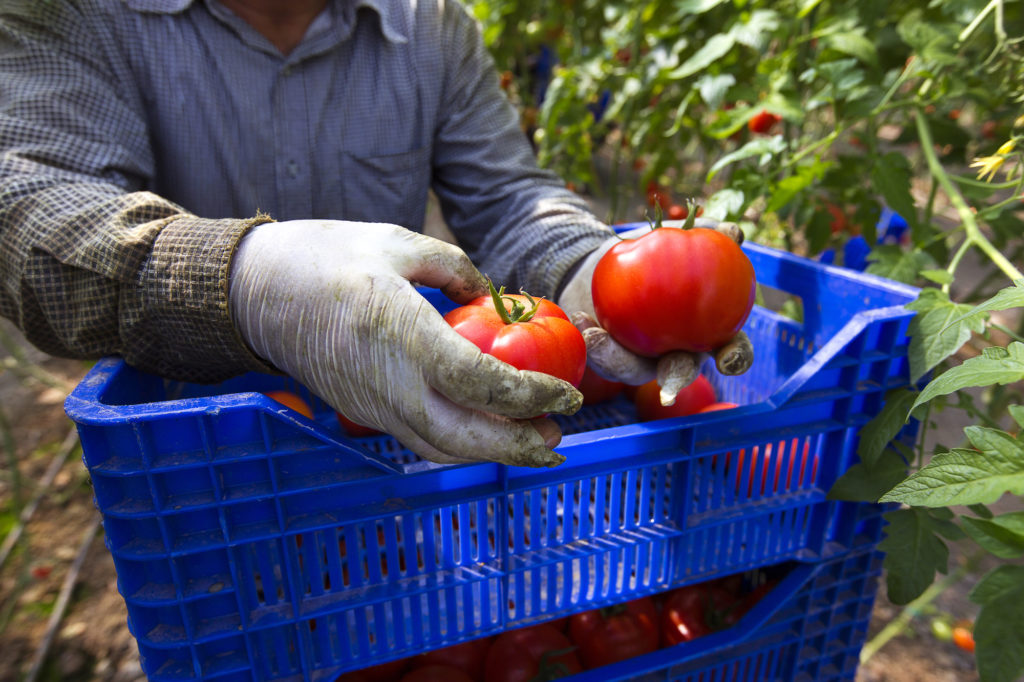Written by Jennifer Benson, Summer 2017 intern in the Harvard Law School Food Law and Policy Clinic.
 It is not news that the number of farmers in the United States has been dwindling, with the consolidation of small family farms into highly industrialized mega businesses, as well as the exodus from rural America into the cities. It also may not surprise readers of this blog that the average age of the American farmer is currently 58 years old and increasing. The last USDA agriculture census indicated there are three times as many farmers over the age of 65 as farmers under the age of 35, while some more recent estimates put the ratio as high as 6 to 1.
It is not news that the number of farmers in the United States has been dwindling, with the consolidation of small family farms into highly industrialized mega businesses, as well as the exodus from rural America into the cities. It also may not surprise readers of this blog that the average age of the American farmer is currently 58 years old and increasing. The last USDA agriculture census indicated there are three times as many farmers over the age of 65 as farmers under the age of 35, while some more recent estimates put the ratio as high as 6 to 1.
As these farmers begin to retire, leaders in the agriculture sector have expressed concern about the future of food and farming in America. If there are no new farmers, who is going to grow our food?
Luckily, there is a new crop of young people who are interested in farming and are ready to take the reins. However, young farmers face barriers to entering the agricultural field that previous generations did not. Land is expensive, and is not widely available; equipment, infrastructure, and inputs also require investment up front; credit can be difficult to come by as a young person with no assets or income; and young farmers are often carrying the additional burden of tens of thousands of dollars in student loan debt.
A survey by the National Young Farmers Coalition (NYFC) found that, on average, their members carry $35,000 in student loan debt. The same survey found that the majority of respondents require off-farm income in order to make student loan payments, and almost 30% of respondents decided not to pursue farming as a career because of their student loan debt.
This issue has gained attention over the past year, thanks in large part to a campaign by NYFC that culminated in the Young Farmer Success Act, a bill that is currently in front of Congress.
If this bill were signed into law, it would add farmers to the Public Service Loan Forgiveness Program (PSLFP), a U.S. Department of Education program that forgives the balance of student loans for graduates who work in public service careers – currently doctors, nurses, attorneys, teachers, and government and non-profit employees. However, with the fate of that program on the chopping block, young farmers are looking elsewhere.
One place they should look is to their own state governments.
Some states, including New York and Pennsylvania, have already created programs to assist young farmers with their student loan payments, and several other states proposed bills during the last legislative session, though none ultimately passed. However, this movement does seem to be gaining momentum, and it is possible we will see more successful state student loan repayment bills in upcoming sessions.
But what about a nation-wide solution? While the PSLFP is probably not going to be expanded, if it survives this administration at all, another piece of federal legislation is ramping up that could provide a home for a beginning farmer student loan program.
Congress has begun crafting the omnibus legislation, known as the farm bill, that governs nearly all aspects of our agriculture system, with a goal of passing an updated version in 2018.

Gardener in the greenhouse
The USDA has expressed a commitment to encouraging young farmers to enter the profession, and the farm bill already contains programs supporting new farmers, including the Beginning Farmer and Rancher Development Program (BFRDP). But advocates will likely need to take a different approach than was taken with the Young Farmer Success Act in order to be successful in Congress.
One option, modeled after a similar program for public interest attorneys, would be a federally funded, state-administered grant program. A grant program solves a couple of problems with the Young Farmer Success Act: first, grants work with a set, predictable budget, and second, they give states the flexibility to create a program that works for them, within parameters set by the federal government.
Unlike the PSLFP, which pays off a student’s remaining debt no matter the amount and for as many program participants as are eligible and choose to participate, a grant program would work within a set budget, funding program participants until the money runs out.
A beginning farmer student loan repayment program would also fit well with the goals of the BFRDP already in place under the current farm bill. Though a grant program will not solve all young farmers financial issues, it could provide enough of an incentive for motivated young farmers to continue to pursue a career in agriculture.
With potential cuts to agricultural funding of $10 billion over the next 10 years, according to the recently released House Agriculture Committee budget resolution, the creation of new programs and asks of increased funding may be a hard sell. But without a solution to the aging farmer crisis, soon there may be no need for a farm bill at all.
